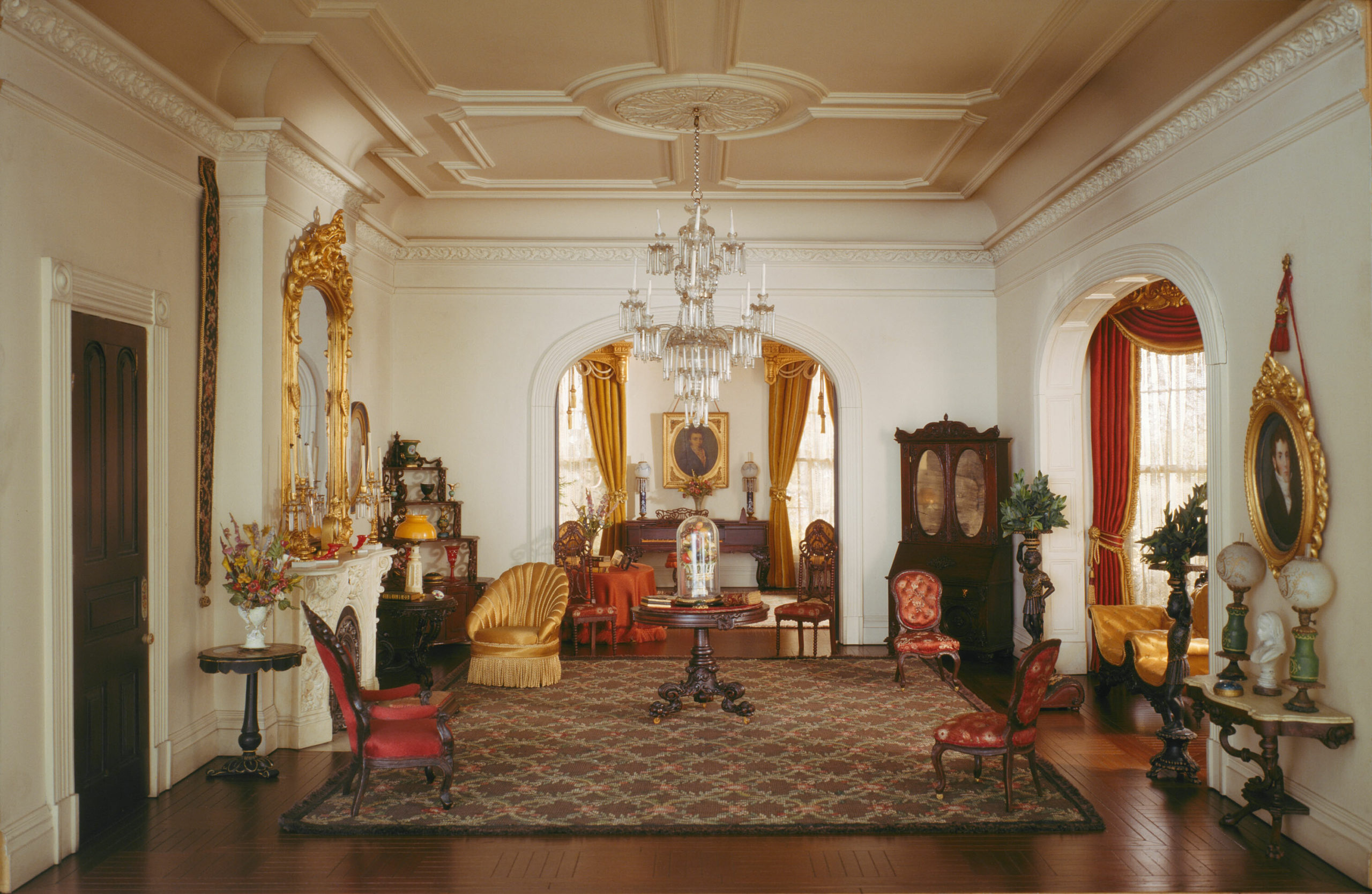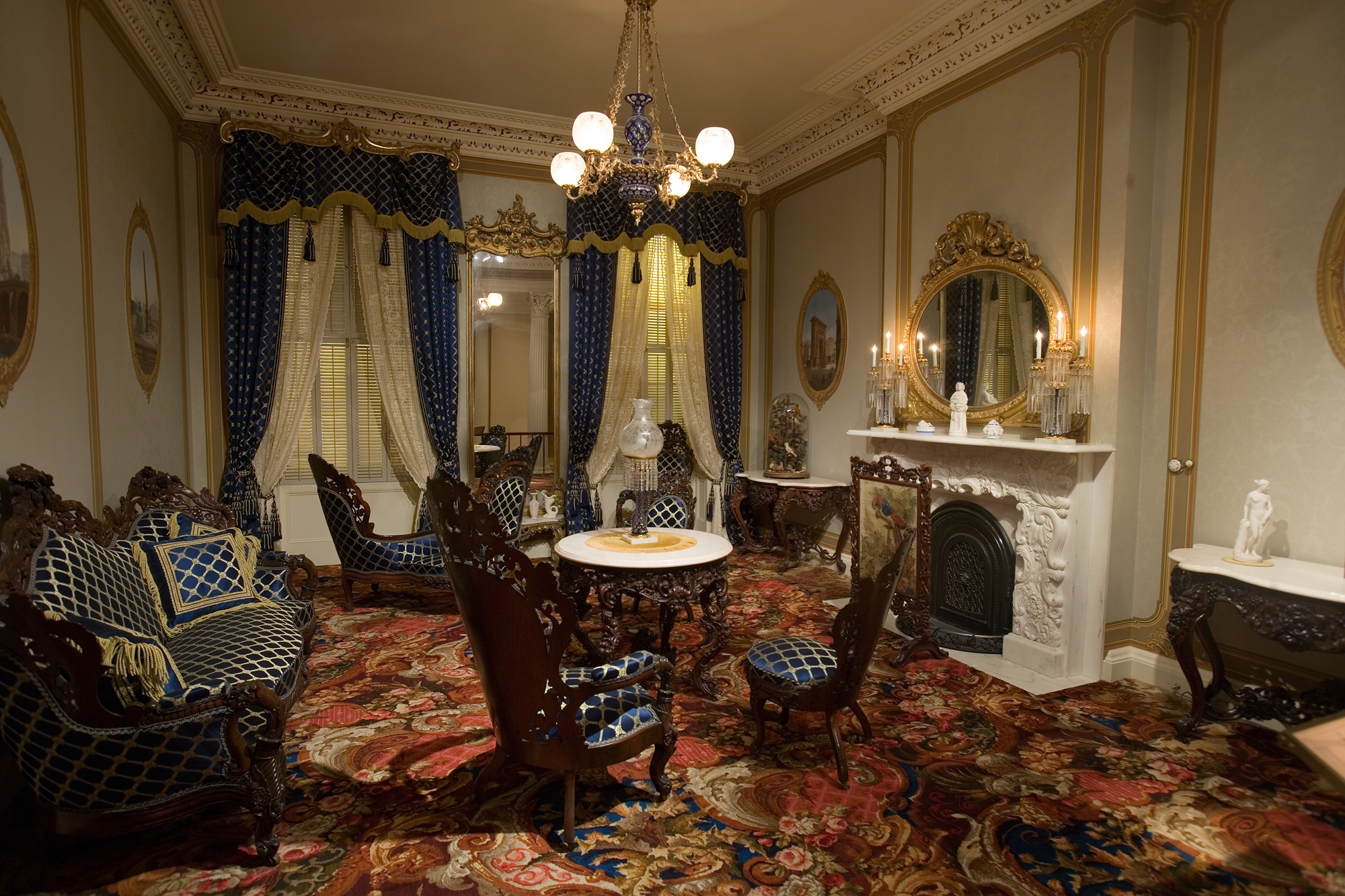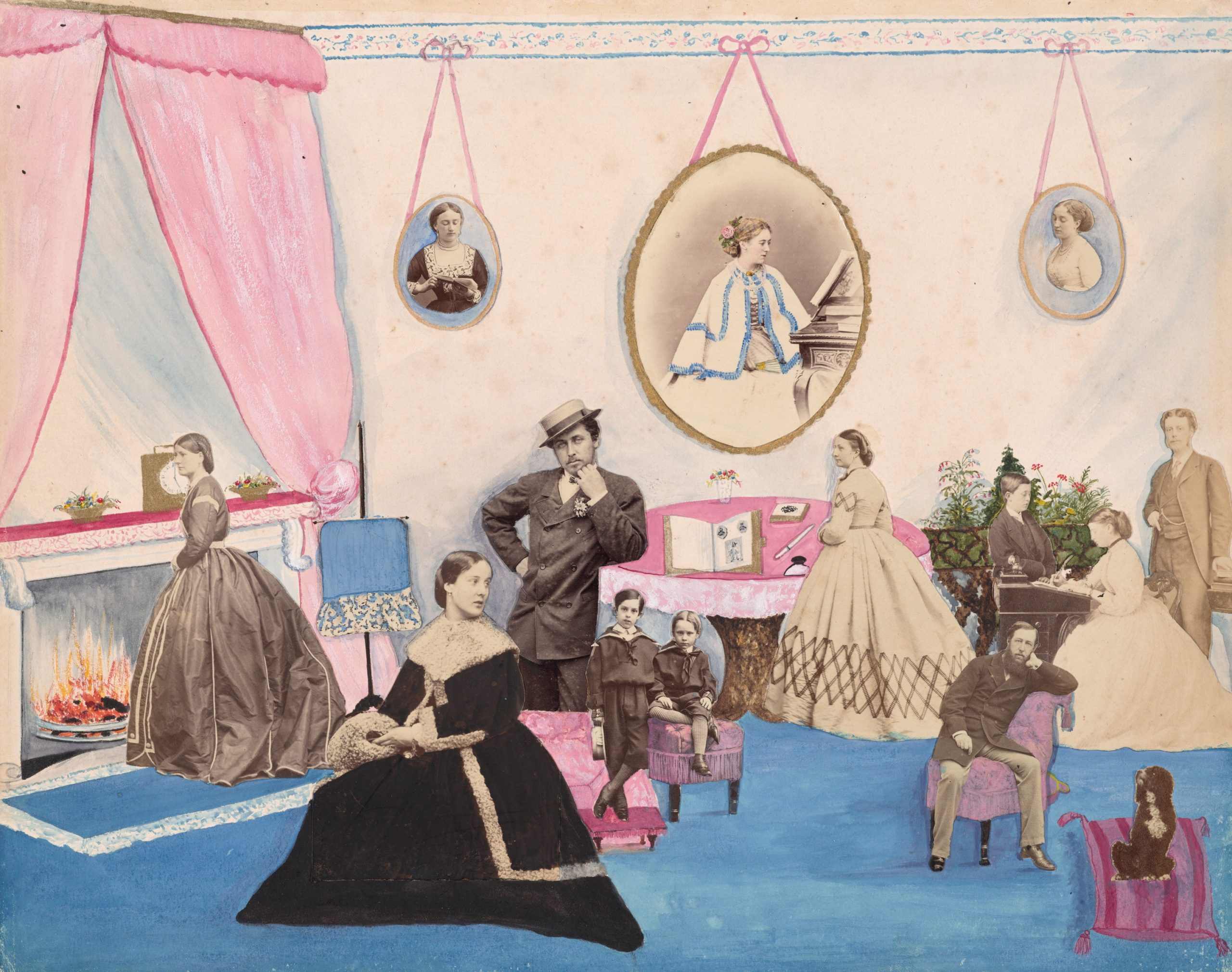
Georgian Double Parlor, c. 1850 from the art institute of chicago

Rococo Revival Parlor from the metropolitan museum
History of the Parlor
Before homes had parlors, they had withdrawing rooms, a private space in the house where families could go to be together. However, throughout the 1600s-1700s, withdrawing rooms started to become drawing rooms, the home’s formal public space used to receive guests and hold social functions. While other countries used their own terms for this area, America favored “parlor,” a word originating in 1225 to mean a space in monasteries where monks would go to speak. Throughout the 20th century, parlors started to shift into the living rooms that exist today due to daily life becoming more relaxed.
Furnishings and Finances
The design of a parlor played a vital role in the function of the room. The furniture and ornaments were specifically chosen as visual representations about the family. A visitor was able to learn about the personality, taste, and social position of the household based on what they saw in the parlor. However, the family was also supposed to match the trends and fashion of the time. These conventions made the parlor a financial burden for some households due to the social pressures to purchase the most expensive furniture a family could buy.
A typical parlor layout would consist of two sofas, two armchairs, four side chairs, a center table, and an étagère (a piece of furniture with open shelves made to display ornaments). All of the furniture would likely be upholstered in matching silk, and was made for looks rather than comfort.

New York Parlor, 1850-70 from the art institute of chicago
Social Gatherings
The parlor was a separate space in the house reserved specifically for special occasions and hosting acquaintances. It was the setting for tea parties, formal calls, music recitals, marriage proposals, and more. Due to the formality of the space, each gathering had its own set of rules to follow and etiquette to be maintained. These conventions were taught through the publishing of etiquette books, teaching proper behavior and conversation. While in a parlor, there was a sense of structure and specificity that was expected from the participants.
Women in the Parlor
Deemed a feminine space, the responsibility of designing and maintaining the parlor fell to the women of the house. They would select the furniture for the space and run the social events that occurred. Women were expected to showcase the family’s personality through the furnishings, but were also able to highlight their own accomplishments by using their handmade items as ornaments. The parlor was the household domain for women as they were able to create and cultivate it.
